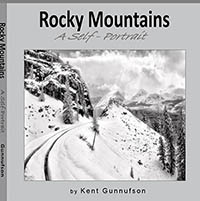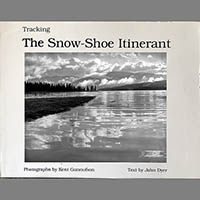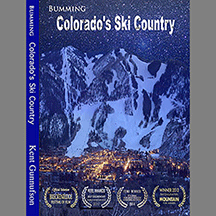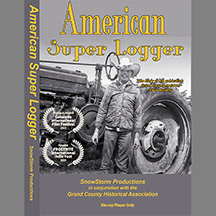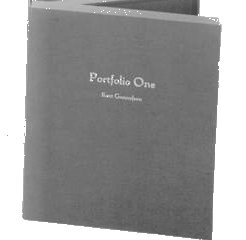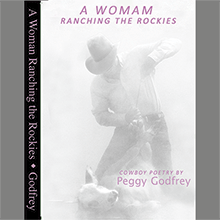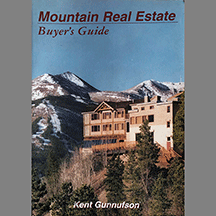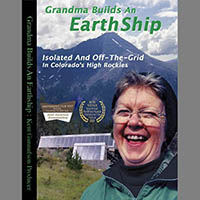
My senior year at CU, I already knew I wanted to move to Aspen after graduating. In 1968, Loveland was opening in October and all serious skiers were there. I instructed at Loveland part time and I found myself riding up the chairlift with another instructor from Aspen. All the way up to the top, I picked his mind about what it was like living in Aspen and what could I expect.
When I eventually moved to Aspen, I found myself framing at the Roaring Fork Apartments. At first, I didn’t realize who I was working along side of. It was Boot.
Several years later, after moving to Breckenridge, I read an interesting article about a foam house under construction. I recognized the name of the designer and builder. It’s Boot again. I see Boot around the county from time to time, and even ended up in a class with him at CMC.
Ten years later, I find him still living in his foam house, and find out he has just remarried at the age of 69. His wife’s name is Charlotte Shintaku Gordon.
“Saturday morning at 8:00, we were married. We were at Vail on the ski slope and all of the ski school was there. You’ve met Charlotte? Well, she is Japanese, raised in Japan. Her father was Japanese from Hawaii. He fought for the American forces in WWII. And then, after the war, he moved to Japan and he met her mother there. She had three brothers, one is deceased, one lives in Hawaii and one lives in San Jose. Her mother still lives in Hawaii. So, she is an American citizen right from the beginning. She went to American schools in Japan. She wore her native wedding dress and I wore mine, a Scottish kilt. It’s funny the way things work out sometimes. I fought the Japanese in WWII and they were the enemy. Now fifty years later, I marry a Japanese lady.
“That’s when I got my nickname, by jumping out of an airplane. I flew P-38’s in WWII and was practicing air spins. I took up an airplane to stall it. I stalled it by pulling the stick back, then kicked in the rudder and the airplane goes into kind of a flat spin.
“The way you’re suppose to pull it out is by kicking the opposite rudder and turning it out; then pop the stick and after one turn it comes out of the spin. Well, I tried it three times and it wouldn’t come out.
“So I jumped out of the plane and pulled my parachute, and my parachute wouldn’t open. I waited and waited. This is an optimist: First he thinks the airplane is going to come out of the spin. Then he thinks that his parachute is going to open. It did open, obviously, but on the second pull. What happens is that you free-fall increasing in speed at a rate of 32 feet per second, until you reach 130 mph, and then when the parachute opens (Boot snaps his fingers), you stop immediately. My boots fell off. A farmer found my boots and brought them back to the air base. From then on, they called me boots.
I skied Aspen just after WWII and had visited a couple of times, and I liked it. In fact, when I lived in Minneapolis, I had many friends, and belonged to the best clubs and fraternities and so forth, but I never felt comfortable there.
“I started skiing when I was four years old. Started teaching my friends when I was eight and professionally when I was eighteen. When I headed to Aspen, I felt like I was home. I don’t know what it was, but I think it was a sense of community we had. That’s when I moved to Aspen, in 1964 or something like that.
“I was a carpenter and a ski instructor. The only problem with Aspen was it didn’t have the opportunity for economic advancement. You could start a bar, but I wasn’t interested in starting a bar. Maybe you could be a building contractor, but I wasn’t interested in that either, although I have done a little bit of building.
“I was there six years. Then I moved to Vail for a couple of years and taught skiing there. Then I moved over here (Silverthorne) while still ski instructing at Vail.
“I’ve work at a number of things to make a living. I wrote three books, a couple of books on skiing. One was HOW TO SKI POWDER NINE WAYS and another titled GORDEN TOWN. I spent a lot of time learning, getting my Masters, and doing spiritual things. I’ve spent a number of years on self growth.
“I came across something I really thought was worthwhile and has even helped me at work. Something they call ‘clearing.’ I find there are all kinds of memories that affect us. For instance, a couple of years ago I had a student in my ski class who was afraid of anything steeper than this floor (pointing to the ramp heading upstairs). And he skied for six years. Anything steeper and he would go into this wedge. He knew how to ski, but he was just frightened of height. I tried all the conventional ski stuff and nothing worked. So I said, I have this system that might help you. So, come tomorrow morning and I’ll see if it works.
“So the next morning he came and I use this system on him. In seven minutes I find out that his brother had pushed him off the breakfront into the ocean, in Australia, where he is from. When he was three years old he fell off this cliff and almost drowned. I found out by tapping into his unconscious what the problem was. So, in only seven minutes after finding the trouble and clearing him of it, we go out on the ski hill in a private lesson. His skis are right together. We went into the back bowls of Vail which are black runs (expert). He didn’t need me anymore because he knew he was cleared of his problem. That was really fun for me to see.
“I especially enjoy teaching the kids. I taught about a year and a half at the public schools. Another fellow and I, a principal, started our own private school here. This was a high school to turn the students on to education. Our program was quite successful. It was called the Academy at the Summit, but the kids called it ‘Boot High’ or ‘B High.’ We really liked each other and we had a lot of fun. It was just a little, simple school. We had about twelve kids in the class. They all went back to school and they all graduated. One was going to quit school and hated it. He went back and got straight A’s. Then he went to college and still got straight A’s.”
Boot takes a few minutes to talk to one of the people staying in his home. The person rents one of his seven bedrooms and the young lady hands Boot some cash.
“Renting out rooms enables me to dream a little bit. For instance, this house is a symbol of my life’s dream, which evolved from awareness. I was a public school teacher in Minneapolis, and had taken a class of eighth graders on a field trip to a public library
and to visit its planetarium. Eighth grade students are all nerves and twitching, and all this fiddling around just like nerve ends. The librarian pushed this button and lowered a parachute over the auditorium. It was the screen for the planetarium to project onto. So immediately, they become relaxed. I thought, what’s going on here? What’s causing this immediate change in energy? There wasn’t much else around of interest. So then I realized curved surfaces are more pleasing to most of us. And I made this amazing discovery, that the first nine months of our lives are not in a box. Then for thousands of years we lived in caves. So we can feel more comfortable by living in rooms with curved surfaces.
“One of the problems I’ve noticed is that architects are left-brained and, therefore, they are interested in things instead of people. They are mathematicians and engineers rather than artists or humanists. They design dwellings with straight walls and ceilings. The cities of today are not very beautiful. To me, they are monuments to the architect, but they don’t have the feeling and comfort that most buildings could have. I don’t think it’s comfortable to half the people in the United States. Half the people in the country lean towards the right brain, the artistic, the creative, which is the opposite of how the engineer thinks. So, what I envision is a community designed in the curves and so that’s why I built this house. So it would provide a model and show what could be done with my concept of a new type of town, Gordentown.
“I’ve had this idea for a place where people reach their potential for something like forty years, since 1948. I’m still interested in trying out the concepts. I believe beauty is important. I certainly have an affinity for the mountains.
“We’re looking at a couple sites down by Pagosa Springs in southern Colorado. It’s very pretty down there. The concept of the town is that we need something very beautiful. Plus that, I would like to see it be in a garden setting. Of course this means that you must get rid of the automobile. For instance, Aspen, Colorado, an interesting town, but one-third of it is in streets. So you use up a lot of territory. You go to Europe, for instance Rothenberg, Broveria, and you see the little wall cities with the narrow streets. To me, it has a feeling of community and this basically is what I think is necessary for a sense of community. You take the average city, it doesn’t seem to have that. This is what I noticed in WWII in our fighter squadron, that when we were living together, we all felt like a community. We didn’t salute each other.
“Anyway, the sense of community in the fighter squadron was really something. We had little clubs and then we had the tents around them and then the mess hall and things for people to do. So then I envisioned a community, a little cluster or village. I thought that people should live in clusters, where they could jointly use an art center or an exercise room, and a hot tub and a swimming pool and a tennis court. This house has a tennis court, an art room, the lake and the river, and everything here, and I never used it. But if you live in clusters, you encourage one another an impetus to get going and help to reach your potential.
“I think we need to have a sense of community through interacting. So, each one of those different districts or divisions has facilities not duplicated in the others and gives you an excuse to go visit the village, or visit the town, or go visit the neighborhood. I’m not talking about sticking people up into little rooms in tall buildings, like they do in apartment buildings in the cities.
“I’m sure the condominium has a little bit of the feeling of community, but doesn’t have the elements needed for what I envision. Firstly, you’ll still have privacy. You don’t have the cars. One is the economic, and the other is the spiritual, and the other is the educational. I think the educational system should be part of the community. I think we have a lot to do with creating self esteem in students and that was my masters thesis back in 1954. All these things are combined in the town that I envision. If we build a town that works, if it’s successful and there’s no crime, then people will start getting excited about their lives, start doing things, feeling good about themselves and with each other, love for one another, and so forth. Amazing things are going to happen.
“I was looking for a number of sites in various states. I go to various sites and study a little bit, then make a proposal. I thought that the site was very important because the people would want that. I figured that if I get the people, then I could go ahead and build the town. That’s all you need is a commitment from X number of people to start it.
“Then I found out that the real obstacle was myself. Remember when Poco said: ‘You’ve met the enemy, and he is us?’ And so, for the last nine years I’ve been trying to understand what is wrong with me and therefore find out what is wrong with everybody else. Because very few of us ever reach our full potential.
“And, of course, when you have a town, the most important ingredient in a town isn’t the buildings, the streets or the street lights. It’s the people in the town. So if you can get people who are fairly clear, or enlightened or what I call aware, you can probably have a very successful town.
“As you know, if you start a business, you have people there work for you that are very dynamic and very sharp, you’re probably going to have a very successful business. But if you have people that are not very clear, you’re probably not going to be very successful. So basically, what I want to do with this is just to prove or show what can be done. Nether words provide a model so others will emulate it.
“I designed it, built it, and did everything. I didn’t hire a contractor. I did all of it except for the plumbing. I buried part of the house and everything is free form. I did all the sculpturing. I’m just trying to show what can be done.
“Everyone likes this house, but it’s not for everyone. It’s great when the kids come over. Children really like this house. They run around and really have fun. That gives me pleasure. I kind of get vicarious enjoyment. Even my renters love it. They want to buy it. It’s a very beautiful setting here. It’s on the river and there is a lake. I really feel a sense of accomplishment building this place.
“But you know what, I’d move tomorrow. You see, if someone asked which would you like to do: go to the moon or build Gorden town, there would be no question about what I would do. It would be far better to build the town. No question about it. I can see what would happen, how successful it would be and how thrilling the change that would take place. So, I think I’ve jumped off enough cliffs with my skis.”
